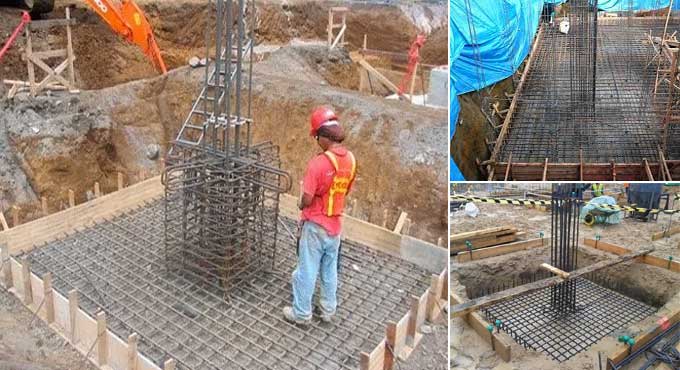
A Guide to Foundation Design in Construction: 10 Practical Problems
People live in houses. An alternative definition is a building used for human habitation, especially one with a ground floor or more. Structures of buildings consist of foundations, walls, floors, and roofs. Various uses can be accommodated under the roof, such as residential, business, educational, and storage.
Building foundations are like tree roots. Root and stem are two parts of a tree, respectively. To capture more soil, the roots of a tree grow deeper and spread across a larger area as they grow. During the growth process, the stem becomes thicker and helps resist all the forces of nature. However thick the tree's trunk, if its roots are not well attached to the soil, it will fall at some point.
The building foundations can be understood by using this natural concept. When designing foundations, it is important to take into account practical construction problems and costs.
1. A shallow foundation should be designed, proportionate to the strength of the surface soil and to the effects of the climatic conditions; especially in waterlogged areas. An excavation in seriously flooded ground can be costly and time-consuming.
2. Especially on stiffened rafts, it is important to avoid expensive and complicated shuttering details. It is important to consider the build ability of a project.
3. As a result of reduced piling costs, advances in ground treatment, etc., the economics of design have considerably changed, and many standard solutions have become obsolete. The construction cost and technique need to be continually reviewed.
4. In addition to being aware of assumptions made during design and of ground conditions, designers also need to be mindful of application of refined soil analyses and construction practicality.
5. The accuracy of the soil investigation, as determined by critical analysis.
6. A comparison of the effect of construction on the properties of the ground, such as vibrations from pilings, deterioration of ground exposed to adverse weather conditions during excavation, removal of overburden, variations in groundwater levels, and compaction of the ground via compaction machines.
7. Effect of the foundation's shape, length, and rigidity, as well as the necessity of settlement joints and movement joints.
8. Sulfate corrosion of concrete, frost heave, shrinkable clays, and the effects of trees; also new construction and rerouting of traffic, installation of equipment in adjacent factories causing vibration and impact on concrete foundations.
9. A fast but expensive construction may be more economically advantageous to clients who seek a quick return on their investment than a slow but low-cost one.
10. Loading of existing structures by new foundations.
An example of each of these practical considerations follows.
Excavation in Waterlogged Ground
At the start of a 1 to 2-meter deep underpinning project in mass concrete, groundwater levels were higher and rising faster than those expected from previous trial pits. In this case, the situation required you to hire a piling contractor. Although it was a more expensive solution at face value, it was more affordable in the long run than trying to pump concrete over time. You will be well aware of the fact that few small site pumps can operate for more than two hours without malfunctioning.
Reliability of the Soil Investigation
The contractor at one site stated that a 5-meter length of steel tube piles would be necessary to achieve the satisfactory set after studying a site investigation report. His piles accomplished the set at the height of 22 m on average, and so clearly, there were cost complications.
Moreover, the contractor was understandably apprehensive about the slenderness of his piles at that depth, thus a major obstacle to getting his piles guaranteed.
Variability of Ground Conditions
Several meters of clay material had a place at one site of varying hardness to softness.
A thorough site investigation was undertaken as the site was going to be developed in phases by different developers. A mass concrete foundation had to be dropped in a hole at least 2 meters deep or placed on virgin or fill ground, and when doing so, whether it would be able to hold 100 kilograms per square meter. Engineering teams should examine trial pits in person rather than relying on reports from their desk.
Ground Deterioration due to Excavation
In a recent case, a portion of a factory had been demolished, exposing a party wall that had been undermined during the excavation for a service duct, which contributed to a classic failure.
Over the weekend, rain caused the excavation to soften, resulting in a collapse. These types of textbook examples result in so many catastrophic failures. It can avoid by taking the simplest precautions.
New Foundation?s Effect on Existing Structure
The proposal was to construct a new storage silo within an existing mill, and it was to erect an empty basement, similar to the next-door silo. After the steel silo had already been fabricated, the authors contacted their practice to seek their opinion.
After the client investigated the fill, it proposed to carry the new silo on smaller diameter piles through the fill down to bedrock. The fill would not pile up further, causing further settlement of the silo.


